In the previous webpage, we provided an overview of some of the more prominent chronology attempts of the Bible using the histories of various civilizations to interact with the Bible. Starting in the 1500’s chronologists began to use new methods in producing dates for chronological use. As more exact sciences were available to Europeans, new attempts were made at fixing certain dates using astronomy, eclipses, equinoxes and finally physics and geology were applied. Most of these dating methods have produced widely different results causing some researchers to doubt the Biblical record.
The most important early researchers was Joseph Justus Scaliger (1540-1609) who decided to apply scientific and systematic system to produce dates for chronological use. Scaliger is important because he used astronomy to establish a number of important dates such as the first Olympiad, as well as the Almagest, (Ptolemy’s famous astronomy treatise from the second century AD.)
Scaliger had a strong background in the classics, and was fluent in thirteen languages. He was a professor at the University of Leiden in Holland from 1953 until his death in 1609. He began his research into chronologies when he was twenty years old, but did not publish any of his research until twenty years later. In the year 1583, following the calendar reform of Pope Gregory XIII he published De emendatione Temporum (On the Correction of Chronology. In 1606 he published Thesaurus Temporum (Repertory of Dates).
Around the same time, Gerardus Mercator (known as the Father of cartography and the inventor of the first flat projection of the globe) published a 450 page work in which he calculated several important historical dates, using eclipses. Most of the copies of this book were destroyed during the Inquisition.
Scaliger faced a huge task when developing his chronology of the world. Many Roman and Greek dates were misunderstood, the Chinese used the Moon’s period, the Mayans used the Sun and the Jews and Muslims used luni-solar calendars. Since the European year consisted of 12.4 lunar revolutions, and the calendar had 365.25 years, calendars had to be adjusted regularly. Some cultures used a leap year, while others rounded off the numbers.
Scaliger was interested in more than calendars and chronology. He was interested in the flow of philological ideas: who influenced whom, and what had ancient writers borrowed from others. To answer these questions he needed to know when they lived, and who preceded whom. So he began to arrange the main events of history into chronological order.
In the mid-1570’s Scaliger began to research the origins of European people. He started with the genealogies of leaders, and from there connected them to Middle Eastern history. The problem was, how could one fix dates to anything, especially if there were holes and gaps in the chronology? To answer this, Scaliger turned to astronomy.
Scaliger replied heavily on a book written in 1578 by Paulus Crusius, The Book of Eras. Paulus was a German professor of Mathematics who was interested in using eclipses and comets to help determine dates.
Scaliger differed with Paulus on many dates, but the introduction of astronomy to date setting provided new arguments, not to mention a whole set of new dates. For instance, the Marathon battle of ancient Greece occurred the same year as a lunar eclipse, so Scaliger moved the traditional date of 776 BC to 491 BC. (Modern calculations make it September 490 BC)
Most of Scaliger’s arguments were long and difficult to follow, especially to anyone not familiar with ancient calendars and the science of astronomy. When his seven volume De emendatione temporum was published it received mixed reviews, and many criticized his dates. A few years later Scaliger published a second volume but he failed to satisfy those who opposed his new set of dates.
The main argument against his dates concerned something known as precession. This occurs because the Earth’s axis wobbles very slowly, circling around once every 26,000 years. Thus spring arrives each year about twenty minutes earlier than it did the previous year, (thus the meaning of precession). Over time these minutes add up, so that spring arrives earlier one day every seventy one years. But calendars force the equinox to fall on either March 20 or 21st, thus causing chronologies to err by several centuries.
Scaliger argued that the Egyptians claimed that Sirius had been rising on the same day of the Julian year for more than a millennium and a half, and that Arcturus rose sixty days after the winter solstice. (Works and Days by Greek Poet Hesiod) “When Zues has finished sixty wintry days after the solstice, the star Arcturus leaves the holy stream of Ocean and first rises brilliant at dusk.”
Astronomers argue that this would have been true only for several decades, not several centuries. Scaliger’s critics also pointed out that the ancients could not have solved the ‘trisection of the angle problem’ (proven later in 1837 by Pierre Wantzel), and they also pointed out a number of arithmetical errors and elementary mistakes.
Despite these criticisms, Scaliger’s chronology survived and is remembered because he was a brilliant innovator who created a new science in the face of tremendous opposition.
In 1627 another milestone in the development of chronologies took place. Dionysius Petavius (Denys Pétau) a French Jesuit theologian published a new chronology )n the Doctrine of Chronology (De doctrina temporum) in which he used AD1 as the central date of history. Petavius introduced the usage of BC (before Christ) and AD (anno Domini, the year of the Lord). Although this system had been used by monastic chroniclers during the late Middle Ages, it was Petavius’ use of them made them popular.
Petavius used lunar (19) cycles, solar (28) cycles, and indiction (15) cycles. The lunar cycles describes the smallest number of full years the Moon takes to complete a full number of orbits (235) around the Earth. 28 is the least number of years after which the calendar repeats itself, with the dates matching the days of the week. Fifteen represents the Roman indiction, a taxation cycle established by Constantine starting with AD January 1, 313.
Diacu describes this system in his book “The Missing Millennium.” The combined cycles method assigns to every date in history its corresponding Julian count, having as its base the Julian epoch (set by Scaliger to 4713 BC, mainly for mathematical reasons and countrin as 1) The year 753, for example, has the Julian count 3961, because 4713 - 753 +1 = 3961. Every Julian count up to 7980 has a unique triplet of numbers, resulting from the remainder obtainied when dividing the Julian county by 19, 28, and 15.
The method works as follows: if certain documents associate a historical event to some year in the lunar cycle, another in the solar cycle, and yet another in the indiction cycle, then the year can be uniquely determined. The method has its limits: if one of the three elements is missing, the date cannot be ascertained.
In time the works of Scaliger and Petavius were widely recognized. However in the 1720’s Isaac Newton argued successfully for precession, proved that every spring’s arrival preceded that of the previous year by a new minutes. This would have profound impact on Scaliger’s dates. Using the writings of Hipparchus, Newton challenged the dates assigned to ancient Greece by Scaliger. Newton wrote his own chronology that a created bitter debate that raged for almost a century after his death. “The Chronology of Ancient Kingdoms Amended.” (1726).
As late as the 1858s, German historian Nobel prize winner Theador Mommsen published The Roman Chronology up to Caesar (Die Römische Chronolgoie bis auf Caesar) in which he argued that many significant dates were unclear and needed changing.
In the second part of the nineteenth century, two Austrian astronomers, Friedrich Cinzel and Theodor von Oppolzer attempted to research ancient and medieval chronologies and improve the mathematical calendrical computations. Their results confirmed many traditional historical dates, but cast doubt on others. Among those dates in question were: the Peloponnesian War (Athens and Sparta) and the birth date of Christ.
The Peloponnesian War was particularly important because it relied on the occurrence of three eclipses. Such phenomena are rare in history, and Scaliger chose 431 BC as a firm date for this, but the Austrians felt that another date must be used.
Nicolai Aleksandrovich Morozov, a Rushian mathematician also challenged these dates. He published Christ in 1924 and The History of Human Culture from the Standpoint of the Natural Sciences in 1932, a seven volume thesis that challenged Scaliger’s and Petavius’ date setting. In Christ, Morozov examined the chronologies of Greece, Rome, Egypt and China. He also analyzed ancient horoscopes to ate the sky, and argues that the dynasties of certain rules overlapped. Morozov argued that Chinese chronology was not developed until the 17th and 18th centuries AD, and were influenced by Scaliger and Patavius. He argued that the Chinese never developed a high level of sophisticated astronomy, and that their astronomical observations were imprecise and unreliable. The Chinese used the Saturn - Jupiter cycle for reckoning a sixty year period. (Jupiter revolves five times and Saturn two times around the sun). He argues that this system was supposed to have begun during the reign of a Chinese emperor sometime between 2513 and 2436 when all the visible planets are near stars ? and ? stars of the constellation Pegasus. Morozov calculated that the only time this would be true was on February 9, 1315 AD. Thus he desired to revise Chinese history by almost four thousand years.
Sir Herbert Butterfield wrote in The Origins of History “The cataclysms of Chinese history seem to have spared little of the historical writings of the pre-Confucian days (before 550 BC); and from early times there seems to have been controversy about the genuiness or the textual accuracy of the things that did survive.”
When discussing Greek history, Morozov noted that ancient Greek history is usually hung on the date of the Peloponnesian War, described by Thucydides. This war covered a 27 year period of struggle between the Greek city states. The traditional date of this war is based on Thecydides’ description of three eclipses that happened during the war. These were originally fixed at 431, 424 and 413 BC. Now, using modern science, Morozov claimed that these dates could not be even close to right. And suggested 1133, 1140 and 1151 AD!
Morozov then tackled Livy’s eclipse, and moved the date from 190 BC to 967 AD! He calculated the lunar eclipse of Livy and Plutarch (traditionally 45 AD and 125 AD) to 955 and 1020 AD, and even claimed that the crucifixion of Christ happened on April 3, 1075. He then suggested that the dates for the Council of Niacea had to be changed from 325 AD to 877 AD.
In the 1970’s a Russian mathematician Mikhail Postnokov revived Morozov’s ideas, although he felt that Morozov’s conclusions must be wildly off. He was followed by a Russian geometer named Anatoli Timofeecich Fomenko who readily applied astronomy to back up Morozov’s ideas. After years of research, Fomenko published a book History: Fiction or Science in which he used mathematics and science to challenge traditional chronologies. He supported the radical chronology change that Postnokov had proposed.
Fomenko’s astronomy led him to date the Almagest to somewhere between AD 600 and 1300 with a high probability for the ninth century. Studying Egyptian zodiacs and horoscopes, Formenko again argued for Egyptian dates to be moved forward by at least a thousand years. An order to support this radical theory, Fomenko had to find ways of reducing the reigns of scores of rulers down through history. In order to do this, he took an idea presented by Isaac Newton in his Chronology of Ancient Kingdoms Amended, where it was suggested that certain parallel kings might have been only one king. Morozov and Fomenko suggested that complete dynasties might be duplicated in history. They began comparing the lengths of kings in various dynasties, and where they could match up an approximation of lengths, they suggested that they were actually referring to the same king. Thus they suggested that the popes from AD 911 to 1376 and the kings of Judah from 931 - 586 BC were actually the same people! They found similarities between the popes of 141 AD - 314 AD and 314 AD to 532 AD, and suggested that they had simply been duplicated in history. They also suggested that the chronology of Carolingian kings and that of some Roman emperors were actually referring to the same kings. In this way the accepted chronology could be reduced down by approximately a millennium, and thus the scientific data about eclipses could be matched up with chronology.
All of these claims were made from several sets of research. The first was on the basis of using computers to simulate eclipses, both partial and total. Fomenko’s mathematical comparisons of popes and kings were made using mathematical formulas. Interestingly enough, no one challenges the mathematics, rather historians challenge whether his conclusions reflect chronological reality. Eventually Fomenko went on to use linguistics and etymology to prove his point. It was here that Fomenko made several exaggerations, if not errors, and a good number of scientific papers quickly followed to demonstrate the errors of Fomenkos claims.
Despite the reactions to Fomenko’s mathematical equations and etymological claims, his research on eclipses has never really been challenged. This is because computer simulations can clearly be used to demonstrate where and when important solar eclipses happened in ancient history. If an ancient record, such as, described by Thucydides where three eclipses happened during the Peloponnesian War cannot be ascribed to that date, then we know that the date is wrong. Or, if the date isn’t wrong, then the position of solar bodies is wrong, and this can only be ascribed to one thing: catastrophe on a scale that moved the earth’s poles or slowed or sped the rotation of the earth.
Catastrophes
Fomenko spent considerable time attacking the chronology of history as presented in the Bible. He felt that traditionally accepted chronology could not be right. Of his three arguments (eclipses, mathematical comparisons of similar chronologies, and etymology), the problem of eclipses has not been solved. Florin Diacu, in his book The Lost Millennium, History’s Timetables under Siege suggests that there are three possibilities that must be considered: 1) there are unknown forces at work; 2) the laws of physics have changed since the past millennium; or 3) traditional chronology is wrong. These are the most obvious answers. Scientists are usually quick to dismiss the first two suggestions, and so the obvious answer is that chronology as we know it is completely wrong. The authors of this book would like to suggest that more research be done on the first suggestion, unknown forces. In fact, we believe that a study of history demonstrates that unusual forces influenced earth’s orbit at various times in history.
Interestingly enough, Diacu starts out his book with an account of Immanuel Velikovsky who suggested that a comet or other celestial object came in close contact with planet earth creating catastrophes at various times in history. Could catastrophe of this level be the reason why Thucydides’ three eclipse over a short period of time cannot be scientifically calculated?
Diacu even notes that Thucydides statement of the eclipses occurred in a paragraph claiming that the war took place during a period of disasters that had no pervious match in history Never had so many people been displaced, so many cities destroyed, and so much blood shed. There were plagues, drought and famine of unparallel extent. Could these eclipses have been recorded during a time of universal catastrophe? Our own research places a major earth wide catastrophe around 700 BC when most civilizations of the world recorded catastrophic events, astronomical anomalies, and a change in the speed of the earth’s rotation around the sun (number of days in the year). Even the Romans suggested that the earth went through a time of catastrophe approximately every 100 years.
Now consider something else that Diacu notes on page 102. On Boxing Day in 2004 an Asian earthquake and resulting tsunami caused a shift of mass towards the Earth’s center, causing the planet to move one-millionth of a second faster and tilted its axis at the poles by 2.5 centimeters. (Richard Gross, NASA Jet Propulsion Laboratory). Diacu quickly discredits earthquakes, but this paragraph demonstrates that catastrophe, whether through earthquakes or close encounters with other celestial objects can radically change the position of the stars in the earth’s sky. This would also have an effect on eclipses.
Way back in the 1920s we at Nabataea.net began charting the ancient eclipses, but like many researchers were limited by the math and computing power need. The problem wasn’t just researching when eclipses would have taken place, the problem is building models that would provide examples of what the earth’s path and axis would have had to have been in order for Thucydides account to have taken place between 700 BC and 300 BC.
On the other hand, we also admit that the chronologies of the earth may need some major adjusting. Back in the 1930s and 1940’s we published numerous articles on the Chronology of the Bible, some of which were later published on the Internet. During the 1980’s and 1990s we began to use computers to chart chronology. The huge problem with challenging traditional chronology, is that is requires expertise in so many disciplines. In order to investigate any new theory, astronomy, mathematics, physics, geology, and the history of every major civilization must be studied. Challenging traditional chronology of the basis of one or two sciences is not sufficient.
We hope to release a number of research articles that will challenge some of the existing chronologies, but we do not present a radically different chronology, such as Fomenko would suggest. Rather, we will try and demonstrate that catastrophes happened at various times in history, influencing commonly accepted scientific dating techniques.





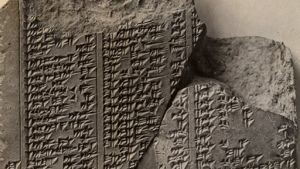


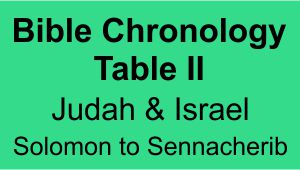
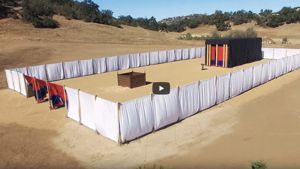
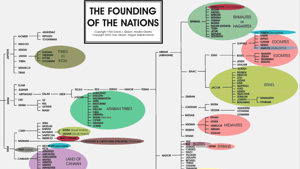

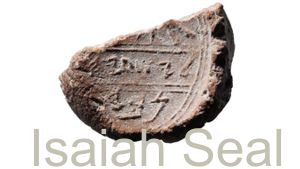
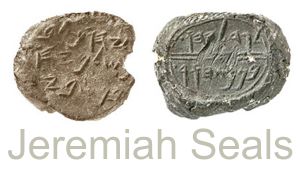







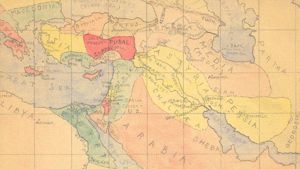
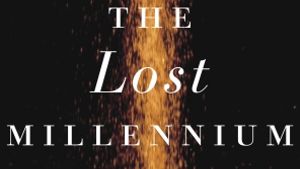
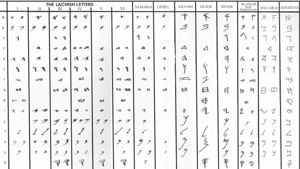
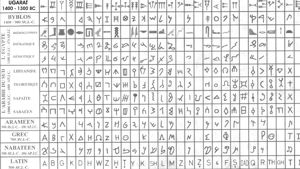
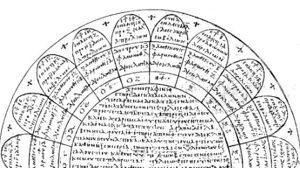
Page Discussion
Membership is required to comment. Membership is free of charge and available to everyone over the age of 16. Just click SignUp, or make a comment below. You will need a user name and a password. The system will automatically send a code to your email address. It should arrive in a few minutes. Enter the code, and you are finished.
Members who post adverts or use inappropriate language or make disrespectful comments will have their membership removed and be barred from the site. By becoming a member you agree to our Terms of Use and our Privacy, Cookies & Ad Policies. Remember that we will never, under any circumstances, sell or give your email address or private information to anyone unless required by law. Please keep your comments on topic. Thanks!